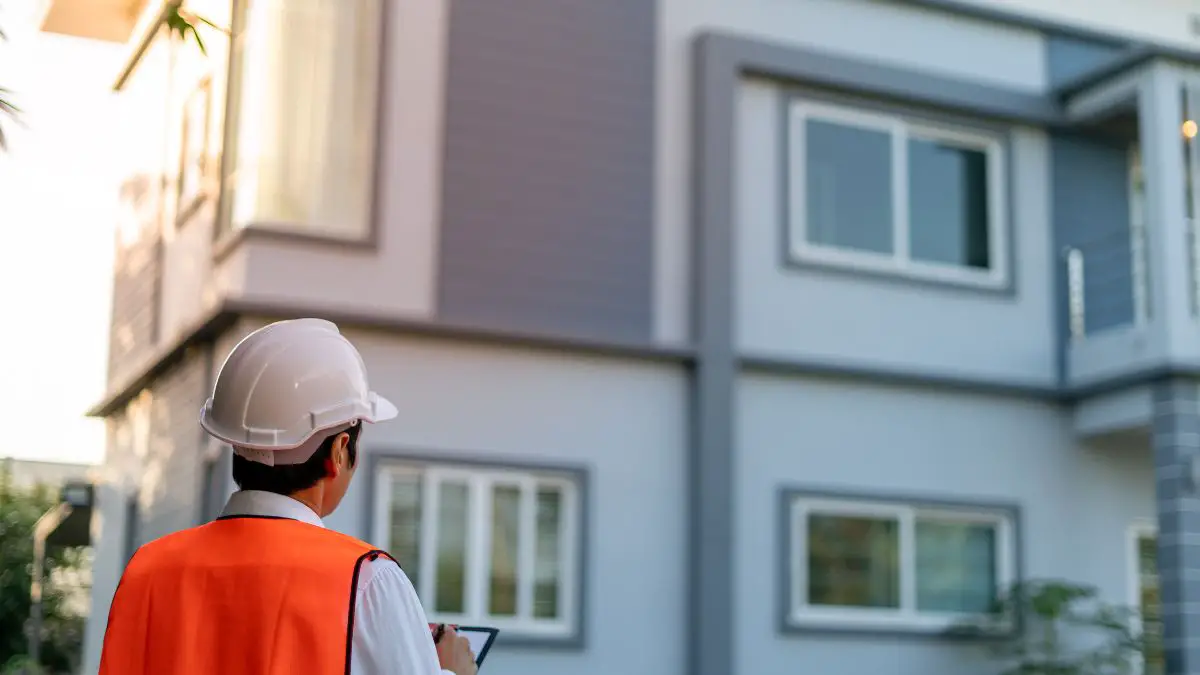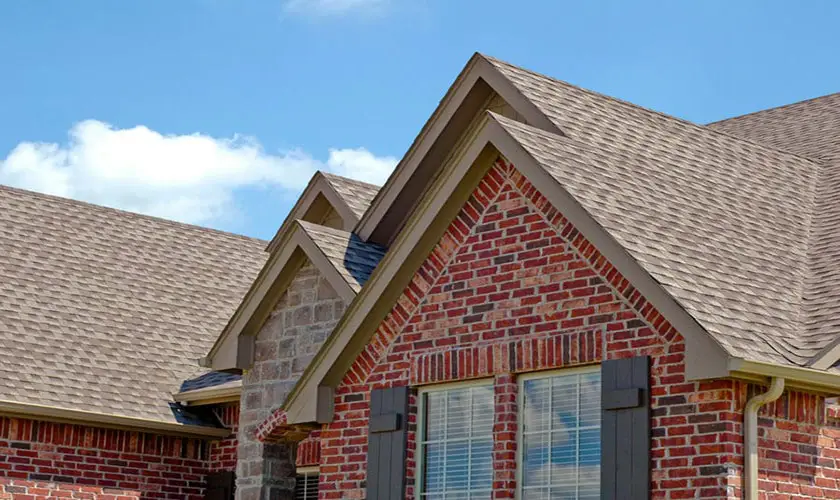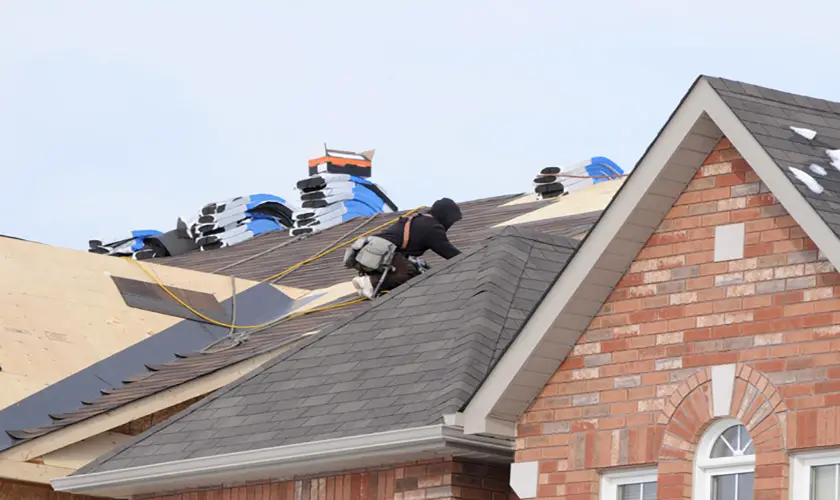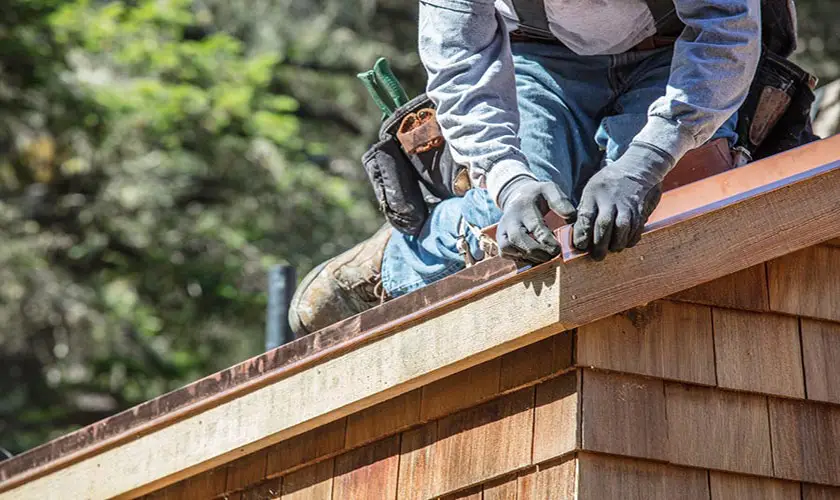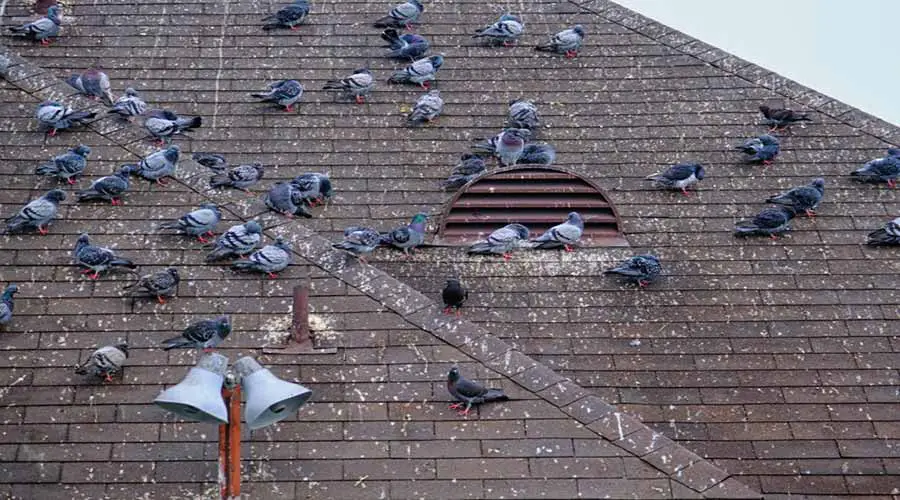
You can run the downspouts in your home above ground or underground. The purpose of the downspout is to ensure that no water touches your building structure.
So, if downspouts going above and underground do the same thing, why do many plumbers make such a big deal about downspouts going into the ground?
Building contractors and plumbers agree that downspouts should go into the ground to tuck them away and maintain a property’s aesthetic. Also, underground downspouts are more effective because they can pair with French drains and sump pumps to throw water far away from the building.
Let’s explore whether these reasons justify burying downspouts underground.
Should You Bury Your Downspouts?
There are minor and major advantages and disadvantages when you bury your downspouts. Check them below.
The Advantages
They Preserve The Aesthetic Of Your Property
Above-ground downspouts can be unsightly. The pipes run all over your lawn, and you have to accommodate them when growing grass in your yard.
Since they are visible, they break the clean green manicured look you would like to achieve on your lawn.
Also, if they leak, they release the water directly onto the lawn, immediately flooding the grass.
But underground downspouts are tucked away underground. So they don’t interfere with the aesthetic of the lawn.
They Help With Uneven Terrain
Uneven terrain can be a nightmare when lying above ground downspouts. The unevenness of the landscape makes it hard for the pipes to sit correctly, rendering them less effective.
On the other hand, the terrain underground is more even, making it easier to lay downspouts.
They Serve High-Risk Homes Better
Your home is high-risk if you experience a lot of rain or snow. Above-ground downspouts do not effectively handle the excess runoff from the rain and snow because they are stand-alone solutions.
On the other hand, underground downspouts can work with other solutions like sump pumps, hydrophobic insulation, French drains, and sealants to contain the overflow and effectively clear it from your property.
For example, the sump pump prevents ice from backing up into French drains in the dead of winter. The sump pump has valves that help it detect rising water pressure levels, and it removes the excess water keeping the underground downspouts effective.
However, since the sump pump is a submersible device, it cannot work on an above-ground downspout.
The Disadvantages
They Are Hard To Service
Underground downspouts are hard to service because of poor accessibility. Getting to the pipes underground is cumbersome.
That makes it harder to maintain the pipes if you have a clog.
On the flip side, above-ground downspouts are easier to maintain because you can access both openings faster and figure out where the clog is.
They Can Freeze
In the dead of summer, when temperatures are extreme, underground downspouts can freeze. When they freeze, they are vulnerable to bursting and leakages due to the pressure from the ice solidifying.
Also, when underground downspouts freeze, it takes longer for the ice to thaw out than with above-ground downspouts.
Where Do Buried Downspouts Go?
Buried downspouts empty into a French drain which carries the water away from the building to drain into the ground wherever the pipe ends.
Some people prefer the French drain empties into a sewer instead of the curb or side of the street.
If you prefer this arrangement, you should work with a professional to properly tap into the drainage system.
When laying buried downspout, do the following:
Map The Route For The Pipes
That is the route that the pipes will follow to carry the water away from your home. Determine this before you even buy the pipes.
Look for a hill or downward slope in the terrain to determine the route you should follow.
Call 811
Call 811, the National Call-Before-You-Dig number. They will find out what government utilities run on your land and mark it before digging the trenches for your pipes.
It is mandatory to call this number and get them to visit your property before you dig. And that includes when planting trees, installing fences, and of course, digging trenches.
They will let you know when they can come to check your property.
Dig The Trenches
The depth of the trench should be at least 12 inches deep. However, the width should leave four inches on either side of the pipe.
Burying the pipes at 18 inches ensures they are far away from the frost line.
Insert The Extension
Use a flexible, preferably, plastic but durable downspout extension to join the downspout to the French drain. Use screws or waterproof tape to do the joining.
Now cover the french drain and the downspout extension until both are buried.
Even though the buried downspouts are right underneath the yard, no one can tell.
Should Gutter Downspouts Touch The Ground?
The downspout should not touch the ground. Instead, it should pitch at the base at an angle that allows the water to continue flowing seamlessly. The pitch should also prevent water from backing up to the gutter and overflowing.
It is a delicate balancing act.
Also, ensure that your downspout is at least 12 inches off the ground. That provides ample space for you to pitch the extension at an angle so that the downspout can clear the water away from the building’s foundation and walls.
How Deep Should My Downspout Drains Be Buried?
The ideal depth at which you should bury a downspout is at least 12 inches off the ground. Some plumbers will go up to 24, 36, or 48 inches deep when installing large pipes to accommodate the size of the pipe.
However, you must contend with underground downspouts that take longer to thaw due to the deeper depth.
What Do Building Code Enforcement Inspectors Say?
Many local city laws require homeowners to comply with all local codes regarding downspout.
Stormwater collections, which include downspouts, have to comply with the city ordinances at all times.
For example, the downspout code in Michigan requires the pipe to run at least 5 feet from the building. Some states are okay with a three feet minimum. Check with your state to find out what is the requirement for your locale.
If you cannot comply with this requirement, the downspout should clear into your back or front yard. You must use 45 or 90-degree extensions, and the yard should preferably have grass or a landscape bed. Other extensions are also allowed depending on your terrain.
The five-feet rule means that the water should be five feet away from ANY building, including neighboring buildings.
It is against the law for your downspout to clear water on the outside walls of adjacent buildings.
Inspectors come around to check if your property complies with the city’s ordinances. If it is not, you will receive a “downspout non-compliance letter” which requires you to make the inspector’s corrections.
Once you have addressed the issues pointed out by the inspector, you can call and schedule a re-inspection of your property.
Conclusion
Because of the intricate way underground downspouts tend to operate, installing and maintaining these pipes is a job best left to the professionals.
Besides, an expert hand will help you with compliance and satisfy the requirements of the city inspector.
Sources
How Do I Run Gutter Downspouts Underground?



